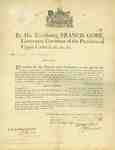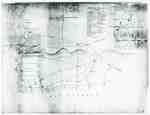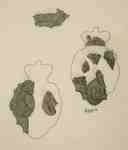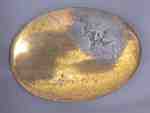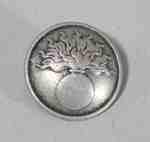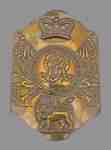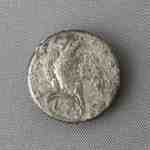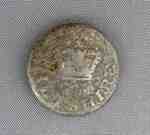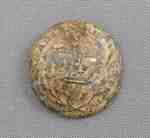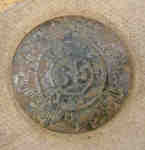Results
- A commission appointing Jonathon Pettit from Ensign to Lieutenant in the 4th Regiment of the Lincoln Militia. It is dated January 3, 1809 and is signed by Francis Gore, Lieutenant Governor of the ProA commission appointing Jonathon Pettit from Ensign to Lieutenant in the 4th …
- This photograph of a plan is titled “Plan of Part of the Niagara Frontier Showing the Communications from Thence to the 15 Mile Creek July 1814”. It was obtained by the Museum from the “National ArchThis photograph of a plan is titled “Plan of Part of the …
- A list of names and location of personnel, dated July 24th, 1814. The following is what has been previously transcribed from the list. York [Sergt. Somerville] Fr. Blanchett Wm. Davis Frs.] Myett RobA list of names and location of personnel, dated July 24th, 1814. …
- This document, dated March 28, 1814, is a report of Captain Bradley's Company. It is currently unknown which Regiment this belongs to.This document, dated March 28, 1814, is a report of Captain Bradley's …
- A letter dated August 1814, from Alex MacDonnell to Lieutenant Donald McDougal concerning his request for a transfer. He also asked about the status of McDougal's wounds and whether he would be readyA letter dated August 1814, from Alex MacDonnell to Lieutenant Donald McDougal …
- A letter dated January 9, 1814, from Amos Lee in Queenston to Captain Benjamin Carryl in Williamsville, New York. Lee was an American prisoner in Queenston at the house of Gilbert Fields, a local farA letter dated January 9, 1814, from Amos Lee in Queenston to …
- These are the pieces of metal that are believed to be the remnants of three different Belgique shakos. The photo shows two shako outlines and 9 of the pieces are adhered to the paper in their properThese are the pieces of metal that are believed to be the …
- This is a plate that would have been attached to a soldier’s cross belt. It is oval shaped with a rough upper surface. There are no clear markings on the inscribed. The reverse side has two knob-likeThis is a plate that would have been attached to a soldier’s …
- This hand-forged key was likely used for entry into a strong box or a large door. It features a rounded shaft. Strong boxes are military issued boxes that are very large and heavy and are constructedThis hand-forged key was likely used for entry into a strong box …
- This is a domed pewter button with a fusilier grenade in relief.This is a domed pewter button with a fusilier grenade in relief.
- This bayonet is of an officer’s fusil musket design. It has a triangular blade and is date circa 1812. A bayonet is a steel blade that is designed to fit on the muzzle of a rifle or musket barrel, maThis bayonet is of an officer’s fusil musket design. It has a …
- This officer's flintlock pistol features a brass butt plate, a trigger guard and a ramrod holder. The pistol is made of walnut with a steel barrel. This pistol dates from 1800-1830 and would likely bThis officer's flintlock pistol features a brass butt plate, a trigger guard …
- This iron fashioned ammunition was created during the War of 1812 period. It gives an insight into the appearance of military munitions during the 1812 time. Diameter: 3.2 cmThis iron fashioned ammunition was created during the War of 1812 period. …
- This an eighteenth century officer’s woven silk maroon sash with tassels on the ends.This an eighteenth century officer’s woven silk maroon sash with tassels on …
- This is a regulation issue plate for a stove pipe shako that was supplied to infantry regulars between 1803 and 1812. There is a Hanoverian crown on the crest with a “GR” cipher surrounded by a GarteThis is a regulation issue plate for a stove pipe shako that …
- United States of America Infantry button made of white metal with an eagle on a branch and “US” in an oval below. The shank is bent on the reverse. The button diameter is 1 cm.United States of America Infantry button made of white metal with an …
- The button is believed to be made of pewter and has a raised “WILTSHIRE” on the face along with a crown in the centre. The diameter is 2.2cm. The 1st Battalion of the 62nd Regiment arrived in HalifaxThe button is believed to be made of pewter and has a …
- It is believed that this is a Canadian Regiment of Fencible Infantry button from the 1812 period. Enlistment for the Fencibles started in 1805 in both Upper and Lower Canada. By the War of 1812 theyIt is believed that this is a Canadian Regiment of Fencible Infantry …
- One researcher has changed our initiate identification to that of the 85th (Bucks Volunteers) Light Infantry. The numerals in the center are encircled by a belt, on which is written "BUCKS", which yoOne researcher has changed our initiate identification to that of the 85th …
- t has “70” raised in the centre surrounded by a raised laurel wreath. “SURRY” is also raised across the top of the button. This regiment was raised in 1782 and sailed from Cork, Ireland to Lower Canat has “70” raised in the centre surrounded by a raised laurel …
When selecting an individual record or object, you will move
to the website of the heritage institution that houses the item.
To return to the search or results pages, select "Back", "Results" or "New Search".
 This project was made possible with the support of the Department of Canadian Heritage
This project was made possible with the support of the Department of Canadian Heritage
through the Canadian Culture Online Strategy.
to the website of the heritage institution that houses the item.
To return to the search or results pages, select "Back", "Results" or "New Search".
 This project was made possible with the support of the Department of Canadian Heritage
This project was made possible with the support of the Department of Canadian Heritage through the Canadian Culture Online Strategy.






